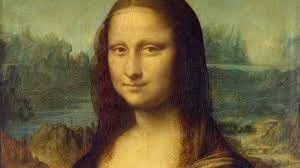In the history of art, it is common for painters to modify the appearance of portrait subjects, especially women. These modifications could include idealizing the features, softening the skin, changing the color of the eyes and hair, and even adjusting the proportions of the face and body.
There are several reasons why this practice has become so widespread. First, painters were often hired to portray their clients in the most flattering light possible. This meant they had to cover up imperfections and emphasize beauty. Second, society at the time had specific ideals of beauty that were reflected in art. Women with delicate features, fair skin and a slender figure were considered the most beautiful, and therefore painters depicted them as such, even if they did not actually look like that.
Thirdly, the painting techniques of that time did not allow realistic depiction of reality. Painters had to use various tricks to achieve the desired effect. For example, they used chiaroscuro to model the face and emphasize the features, and color to bring the skin and hair to life.
As a result of these factors, it is important to realize that the female portraits of the past may not always correspond to reality. Many of them are idealized depictions of beauty rather than realistic portraits of a specific person.
Some examples of editing female appearance in portraits
Idealization of features: Painters often softened facial features, enlarged the eyes and lips, and reduced the nose.
Skin softening: Skin was often portrayed as flawless and porcelain, when in reality women suffered from freckles, wrinkles and scars.
Changing the color of eyes and hair: Blue eyes and blond hair were considered ideal, so painters often gave them to women, even if they were actually a different color.
Adjusting the proportions: Painters sometimes adjusted the proportions of the face and body to make women look slimmer and more attractive.
Consequences of modifying the female appearance
Unrealistic image of beauty: Women in portraits looked like perfect beings, leading to unrealistic expectations of female beauty.
Low self-esteem: Women who did not compare to the idealized images in the portraits could suffer from low self-esteem and feel inadequate.
Reinforcing gender stereotypes: Idealized images of women in portraits reinforced stereotypes about how women should act and look.
Nowadays, there is more and more discussion about how the media portrays female beauty. It is important to realize that images of women in advertising, movies and social media are often edited and unrealistic. This can lead to negative consequences for women’s self-esteem and psyche.
It is important that we learn to critically perceive images of women in media and art and not be swayed by unrealistic ideals of beauty. We should realize that beauty is a subjective concept and that every woman is beautiful in her own way.




